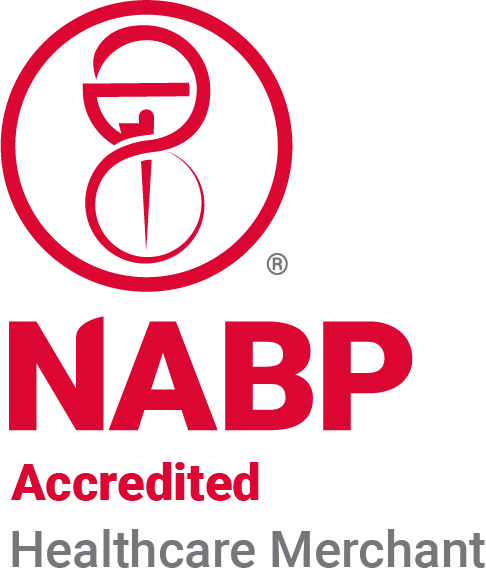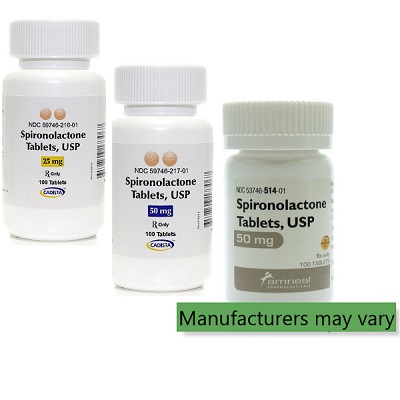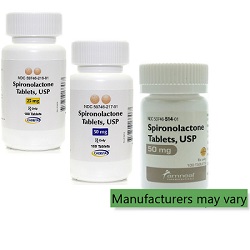Providing Quality & Trust
Spironolactone Tablet
Cadista
$0.40 - $62.30
$0.40 Each
Detailed Description
Spironolactone Tablets
Spironolactone is a potassium-sparing diuretic used to treat congestive heart failure or high blood pressure. It may also be used to treat other conditions as determined by your veterinarian.
This product is sold by the individual tablet or in 100 count bottles. When ordering by the individual tablet, please order a quantity greater than 1 tablet at a time.
- Spironolactone may be given with or withoutfood. If your animal vomits or acts sick after receiving this medication on an empty stomach, try giving the next dose with food or a small treat. If vomiting continues, contact your veterinarian.
- This drug is commonly used in combination with other medications to treat heartfailure; it may also be used to relieve signs associated with liver disease.
- The animal must always have access to fresh, clean water while on this medication, as spironolactone will cause your animal to drink and urinate more.
- Because this drug can change electrolytes (salts) in the blood, regular blood testing will be necessary to keep your animal safe.
- Contact your veterinarian immediately if your animal develops skin sores, facial itching (cats), persistent or severe lack of appetite, vomiting, or diarrhea, or if your animal has low energy, increased breathing rate or effort, trouble walking or balancing, or stops drinking or urinating.
Spironolactone:
| Form: Tablet | Brand Equivalent: Aldactone® | ||
| Strength | Package Size | NDC | HDA |
| 25mg | 100 | 59746-0216-01 | |
| 50mg | 100 | 59746-0217-01 | |
Active Ingredients:
- Spironolactone
Directions for Use:
For this medication to work, give it exactly as your veterinarian has prescribed. It’s a good idea to always check the prescription label to be sure you are giving the drug correctly.
- Unless your veterinarian tells you differently, make sure that your animal always has plenty of fresh, clean water available while getting this drug.
- This medicine may be given with or withoutfood. If your animal vomits or acts sick after receiving the drug on an empty stomach, try giving the next dose with food or a small treat. If vomiting continues, contact your veterinarian.
- Since this medication may cause your animal to urinate more often than normal, try to avoid giving the last dose of the day within a few hours of bedtime to reduce the need to get up during the nightto let your animal outto urinate. Your veterinarian can suggest the besttimes to give this drug to your animal to help avoid this problem. NEVER withhold water to avoid your animal’s need to urinate more frequently.
- Compounded liquid forms of this medication must be measured carefully. Your veterinarian or pharmacist can help by providing special measuring spoons or syringes.
- If you have difficulty getting your animal to take this medication, contact your veterinarian or pharmacistfor tips to help dosing and reducing the stress of medication time.
- This medication can be given for various lengths of time. Be sure you understand how long your veterinarian wants you to continue giving this medication. Prescription refills may be necessary before the therapy will be complete. Before stopping this medication, talk to your veterinarian, as there may be importantreasons to continue its use.
Use as directed by veterinarian.
For more information see prescribing information.
How is this medication useful?
Spironolactone is a diuretic that works in the kidneys to remove excess fluid and saltfrom the body. This medication is used in combination with other drugs to treat heartfailure and relieve extra pressure on the heart; it may also have some protective effects on the heart muscle. Spironolactone may also be used in dogs to treatfluid buildup in the abdomen that can occur with end-stage liver failure.
- The FDA (U.S. Food & Drug Administration) has approved this drug for use in humans, butitis not officially approved for use in animals.
- The FDA allows veterinarians to prescribe products containing this drug in different species or for other conditions in certain situations.
You and your veterinarian can discuss why this drug is the most appropriate choice.
What are the side effects ofthis medication?
Common but not serious side effects include:
- Excessive thirst and greater need to urinate.
- Low energy. This temporary effect should improve with time.
- Water and electrolyte imbalances.
- Spironolactone can cause enlarged breasts in men; itis not known if this occurs in animals, butif the animal’s nipples or breasts enlarge, contact your veterinarian.
- Vomiting and/or diarrhea.
You don’t have to be overly concerned if you see any of these effects unless they are severe, worsen, or continue to be a problem. Contact your veterinarian if this happens.
Side effects that may be serious orindicate a serious problem:
- Cats: severe, itchy sores on face. Seen most often in Maine coon cats.
- Excessive thirst with no urination.
- Excessive weakness or collapse; unable to get up.
- Fast heartbeat.
Contact your veterinarian immediately if you notice any of these effects.
Precautions/Warnings:
Spironolactone is contraindicated in patients hypersensitive to it and those with hyperkalemia, Addison’s disease, anuria, or acute renal failure. It should be used cautiously in patients with significant renal impairment or hepatic disease but is often used to treat ascites.
The label for Prilactone®Next (the canine product licensed in the UK) states Do not use in dogs suffering from hypoadrenocorticism, hyperkalemia, or hyponatremia. Do not administer spironolactone in conjunction with NSAIDs to dogs with renal insufficiency. As spironolactone has an antiandrogenic effect, it is not recommended to administer the product to growing dogs.
The National Institute for Occupational Safety and Health (NIOSH) classifies spironolactone as a hazardous drug; personal protective equipment (PPE) should be used accordingly to minimize the risk of exposure. See Controlling Occupation Exposure to Hazardous Drugs for more information.

Powered by nopCommerce
This site is running in live payment mode. Real payments will be processed.

